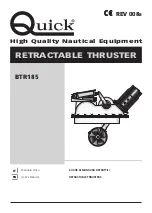
Introduction of BIOS
3-1
Chapter 3
Introduction of BIOS
The BIOS is a program located on a Flash Memory chip on the motherboard. This
program will not be lost when you turn the computer off. This program is also
referred to as the boot program. It is the only channel for the hardware circuit to
communicate with the operating system. Its main function is to manage the setup
of the motherboard and interface cards parameters, including simple parameters
such as time, date, hard disk drive, as well as more complex parameters such as
hardware synchronization, device operating mode,
CPU
SOFT MENU ™
II
techniques, setup of CPU speed. The computer will operate normally, or will
operate at its best, only if all these parameters are correctly configured through
the BIOS.
When you start the computer, it is controlled by the BIOS program. The BIOS
first operates an auto-diagnostic for all the necessary hardware, configures the
parameters of the hardware synchronization, and detects all the hardware. Only
when these tasks are completed does it give up control of the computer to the
program of the next level, which is the operating system. Since the BIOS is the
only channel for hardware and software to communicate, it will be the key factor
for system stability, and to ensure that your system performs at its best. After the
BIOS has achieved the auto-diagnostic and auto-detection operations, it will
display the following message:
PRESS DEL TO ENTER SETUP
Three to five seconds after the message is displayed, if you press the
Del
key, you
will access the BIOS Setup menu. At that moment, the BIOS will display the
following message:
M
Don’t change the parameters inside the BIOS unless you know what you
are doing
The parameters inside the BIOS are used to setup the hardware synchronization
or the device operating mode. If the parameters are not correct, they will
produce errors, the computer may crash, and sometimes you will even not be
able to boot the computer after it has crashed. We recommend that you do not
change the parameters inside the BIOS unless you are familiar with them. If you
are not able to boot your computer anymore, please refer to the section “Erase
CMOS data” in Chapter 2.
Summary of Contents for BX6
Page 2: ......
Page 7: ...Introduction of BX6 Features 1 3 2 Layout Diagram Figure 1 1 Motherboard Component Locations ...
Page 8: ...Chapter 1 1 4 3 The System Block Diagram ...
Page 22: ...Chapter 2 2 14 ...
Page 66: ...Appendix A A 6 ...
Page 72: ...Appendix B B 6 ...
Page 86: ...E 6 Appendix E ...
Page 98: ...G 6 Appendix G ...















































